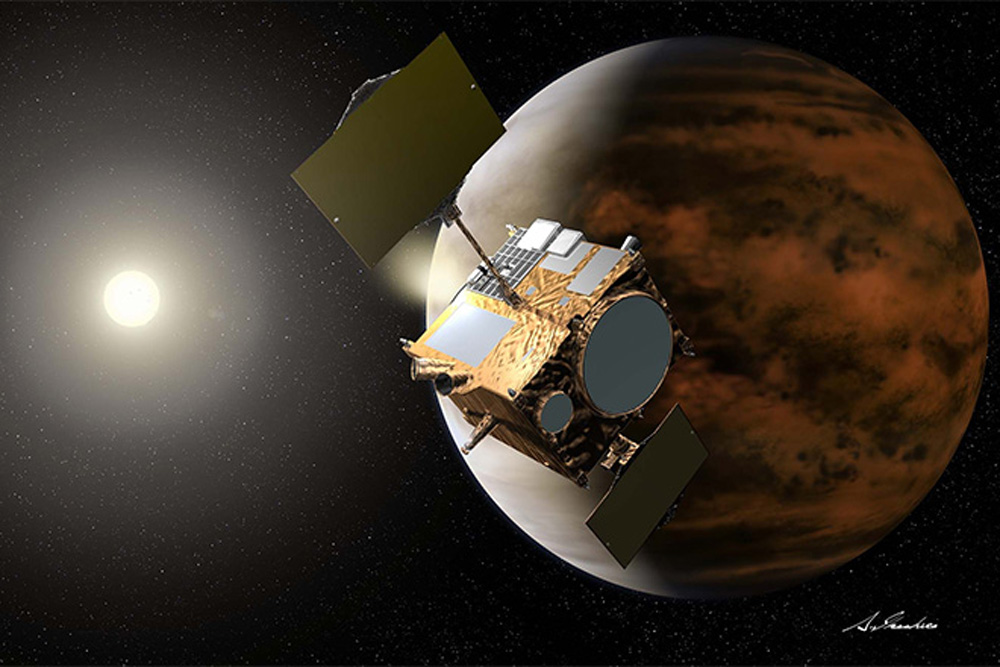Not 'UARS' to Keep: NASA Warns Against Collecting Falling Satellite's Debris

NASA's 6-ton Upper Atmosphere Research Satellite (UARS) is expected to fall back to Earth late tonight or early Saturday (Sept. 23 or Sept. 24 EDT), raining more than two dozen large chunks of debris on the surface. But don't even think about keeping a piece for yourself.
Should the public find parts from the satellite where they fell or, since current projections suggest an ocean splashdown is more likely, after being washed ashore, NASA is warning people to stay away for both safety and legal concerns.
"If you find something you think may be a piece of UARS, do not touch it. Contact a local law enforcement official for assistance," NASA wrote on its website two weeks ago after it became evident that UARS's fall was approaching.
Orbital debris scientists predict that up to 26 parts of the 35-foot (10.6-meter) satellite will survive the fiery reentry into the atmosphere and either touch- or splash-down. A high-gain antenna gimbal, fuel tanks, batteries and reaction wheel rims are among the components expected to hit the Earth. [Complete coverage of NASA's falling satellite]
In total, the predicted debris accounts for 1,100 pounds (500 kg) of the 5.7-ton spacecraft with the most massive fragment estimated to weigh a little more than 300 pounds (150 kg).
Hands off the satellite
UARS, which was decommissioned in 2005 after 14 years of service, no longer has fuel or other materials that are inherently harmful should the public come in contact with its debris. Nor will its parts be flaming when they land.
Breaking space news, the latest updates on rocket launches, skywatching events and more!
"Pieces of UARS landing on Earth will not be very hot. Heating stops 20 miles up, cools after that," NASA wrote on Twitter Friday. [Photos of NASA's Huge Falling Satellite UARS]
From a safety perspective, the main reason not to touch the debris, NASA says, is the chance of being injured by sharp metal. It's not uncommon for sharp edges to form as the satellite is torn apart by re-entry and then impacts the Earth.
But even if those who find debris are careful about how they handle it, there is another reason why NASA wants the public to call the authorities: UARS, even in pieces, belongs to the United States.
Finders not keepers
"Because this is a U.S. government satellite, any object that does reach the surface of the Earth, should it be found, is still the property of the United States," said Nick Johnson, chief scientist of NASA's Orbital Debris Program Office at the Johnson Space Center in Houston. "You do not have the luxury of trying to sell it on eBay."
Should the satellite drop debris over the United States, which as of Friday NASA could not entirely discount given UARS's slower than previously predicted descent, then U.S. laws will apply. Any parts found must be surrendered to the government. Pocketing pieces as souvenirs could lead to charges of theft of government property. [6 Biggest Spacecraft to Fall Uncontrolled From Space]
If debris rains down outside the country, or splashes down in the ocean and later washes ashore on foreign soil, then the United Nations' Outer Space Treaty could still offer the U.S. the option of requesting the debris to be returned. Any of the 100 nations that are party to the 1967 convention would be required to comply, though the U.S. would be responsible for any transportation costs.
NASA's interest in recovering UARS's parts has more to do with protecting the public than it does a desire to study the fragments, though orbital debris scientists say that the smaller the parts that are found, the more they may be able to better understand what can survive controlled and uncontrolled reentries.
Think you found a piece of UARS’s debris? First contact the authorities as NASA advises and then let collectSPACE.com know. collectSPACE will be tracking debris reports.
Follow collectSPACE on Facebook and Twitter @collectSPACE and editor Robert Pearlman @robertpearlman. Copyright 2011 collectSPACE.com. All rights reserved.
Join our Space Forums to keep talking space on the latest missions, night sky and more! And if you have a news tip, correction or comment, let us know at: community@space.com.

Robert Pearlman is a space historian, journalist and the founder and editor of collectSPACE.com, a daily news publication and community devoted to space history with a particular focus on how and where space exploration intersects with pop culture. Pearlman is also a contributing writer for Space.com and co-author of "Space Stations: The Art, Science, and Reality of Working in Space” published by Smithsonian Books in 2018.
In 2009, he was inducted into the U.S. Space Camp Hall of Fame in Huntsville, Alabama. In 2021, he was honored by the American Astronautical Society with the Ordway Award for Sustained Excellence in Spaceflight History. In 2023, the National Space Club Florida Committee recognized Pearlman with the Kolcum News and Communications Award for excellence in telling the space story along the Space Coast and throughout the world.
